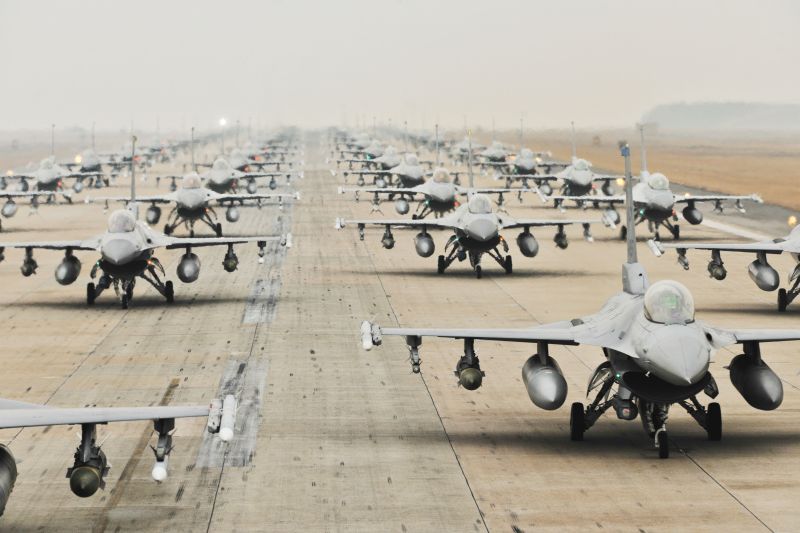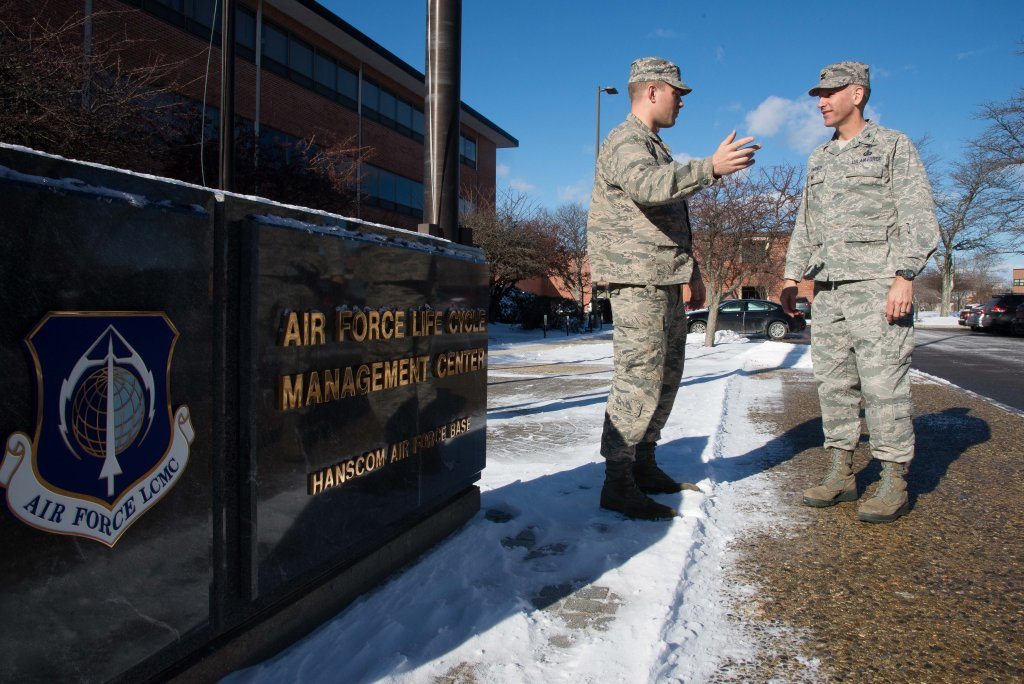In fact, it takes a lot of everything to conduct even one air operation much less meet the requirements of a global superpower. By the standards of modern air warfare, the campaign against ISIS (Operation Inherent Resolve) is not a big affair. Nevertheless, this small war against an adversary with no air force or even air defenses has demanded the use of a lot of aircraft and many thousands of flying hours.
In 2015, the U.S. and the coalition flew between 18,000 and 22,000 sorties and conducted some 9,600 strikes in Iraq and Syria, expending around 29,000 munitions and damaging or destroying 24,000 targets. Virtually every aircraft in the U.S. military including the F-22, B-1, F/A-18 and the MV-22 have been deployed. In support of these activities, the U.S. military conducted 14,000 tanker sorties, refueling approximately 80,000 aircraft, 8,000 airlift sorties and around 9,000 ISR sorties by both manned and unmanned platforms.
Pretty impressive, right? The reality is that the U.S. military barely has enough aircraft, munitions, spare parts or support personnel to conduct one major contingency. The Air Force employed 33 fighter squadrons during Desert Storm; today it only has 55 total. In order to provide the required ISR to support air strikes against ISIS, assets have been pulled from other theaters, leaving the U.S. vulnerable to a surprise move by Russia, China or even North Korea. The increased expenditure of munitions against this “JV” adversary has depleted U.S. stocks, forcing the Air Force to budget additional resources for munitions.
Yet, the U.S. military today has to plan for the possibility of conflicts in both Europe and the Western Pacific. If either of these theaters ever got hot, the air campaign against ISIS would have to be shut down. Unfortunately, ISIS isn’t likely to stand down just because the U.S. is preoccupied elsewhere. Nor is Russia likely to withhold its fire in the event of war, in order to allow the U.S. to first defeat ISIS.
But the appropriate quantity of “stuff,” otherwise termed capacity, is only one of two necessary attributes of an aerial superpower. The other is capability which can be defined as aircraft and other systems that can operate successfully and effectively in a modern combat environment. This environment is becoming increasingly dangerous and even lethal. Air defenses operated by or for Ukrainian separatists shot down some six combat aircraft including three SU-25 Frogfoot, the equivalent of the U.S. A-10 ground attack aircraft. In 2012, a Turkish F-4 on a reconnaissance mission in international air space was destroyed by Syrian air defenses and in November, 2015 a Turkish F-16 shot down a Russian SU-24.
Russia and China, in particular, are closing the technological gap with the U.S. in terms both of aerial systems and surface-based air defenses. Russia is acquiring advanced fighters, long-range munitions and new electronic warfare systems. It is deploying its most modern air defense missile systems near NATO’s western borders and in Syria. The head of the U.S. Air Force in Europe, General Frank Gorenc, warned that the Russian air defense network posed a threat to NATO’s ability to operate in much of Eastern Europe, including one-third of the skies in Poland. Russia has threatened to sell advanced air defense systems to Iran.
China has built one of the densest and most lethal air defense networks in the world. In addition to acquiring advanced military aircraft from Russia, it is developing home-grown capabilities. The J-31, China’s first indigenously developed fifth-generation fighter jet, was on display at this year’s Dubai Air Show.
Battered by declining budgets, the rise of new threats and the threatened loss of its technological superiority, the U.S. military has struggled to maintain a balance between deploying enough aircraft, munitions and support systems to conduct today’s missions and investing in advanced capabilities with which to fight and prevail in future conflicts. For the past several decades, the Air Force and Navy could rely on the overhang of capacity and capabilities from its Cold War investments as an insurance policy against surprises such as the rise of ISIS or emerging threats such as Russian aggression in Eastern Europe. But no longer.
Air power is the coin of the realm in 21st Century warfare. When President Obama decided to take on ISIS he called on the U.S. Air Force and naval aviation. Similarly, Russia’s intervention in Syria has been conducted almost exclusively by means of air and missile strikes. Over the past several years, Russian bombers have conducted dozens of simulated nuclear strikes on the U.S., NATO and Japan and hundreds of harassing maneuvers of U.S. and friendly aircraft and ships. China is building airfields on its man made islands in the South China Sea and is building a fleet of aircraft carriers.
The United States must reinvest in its Air Force and in naval aviation, both in numbers of aircraft and cutting-edge capabilities, in order to be assured of its security in the decades to come.











